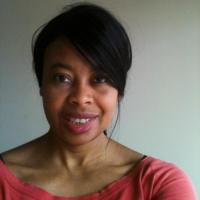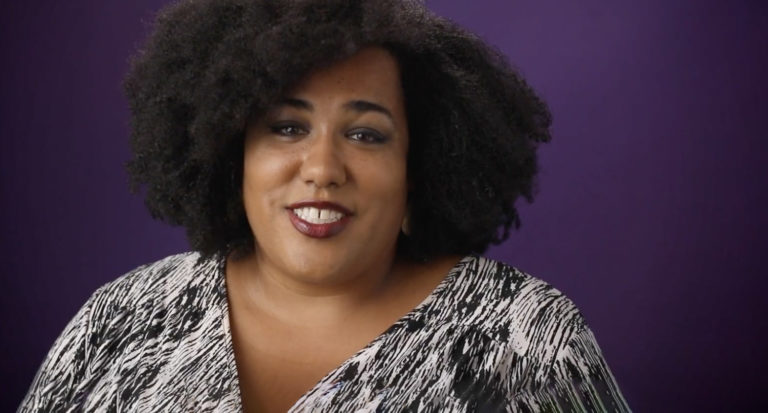
A native of Chicago’s Marquette Park neighborhood on the southwest side, Cassie M. Chew operates as a freelance healthcare policy reporter based in D.C.
The Care Plan prioritizes LGBTQ+ and racially diverse caregivers.
After her wife was diagnosed with stage IV cancer in 2011, Marsha Wetzel spent the next two years taking care of Judy, her partner of 30 years, until Judy entered hospice care.
Within weeks of Judy’s death, her family evicted Wetzel from the home they shared.
Suddenly, Wetzel, an older woman with a disability, was in need a place where she herself could receive long-term care. Finding senior housing where she could feel safe became her next battle.
“As soon as she came out [to other residents in the care facility], she started to get harassed,” says Jacqueline Boyd, the care management professional who helped Wetzel navigate treatment and services during the challenging years of Judy’s illness and then Wetzel’s own care management. “She talked to the staff, but the staff didn’t have policies or procedures. They didn’t know how to handle it, so they didn’t address it.”
As she helped Wetzel through these challenges, Boyd also was laying the groundwork for The Care Plan — a Chicago-based care planning company that provides advanced planning for people with unique needs, typically overlooked by the traditional medical community. This includes the 2.4 million Americans age 65 and older in the LGBTQIA+ community. The Care Plan also serves Black and Brown communities, says Boyd, who, prior to founding The Care Plan, spent more than a decade in various leadership roles at geriatric care facilities in Chicago.
The foundation for Boyd’s life’s work began at age 18 when her mom was diagnosed with diabetes and rheumatoid arthritis. “I knew that both of those were long-term conditions that were likely to deteriorate over time,” Boyd says. So she took a six-week course to earn her certified nursing assistant license.
She wanted to learn practical caregiving skills — how to help someone check their blood sugar, navigate mobility issues, and more. She’s continued to learn ever since.
“What I have seen since being a care navigator, and now managing a team of 10 care navigators, is that our clients are at intersections,” Boyd says. They’re dealing with biases around race, sex, class, and language in the healthcare and aging industries.
“I’ve had clients with limited English proficiency, who doctors just talked over. I’ve had to say, ‘We need quality medical interpretation, and we’re not leaving until we get it,’” Boyd says.
For Black and Brown people, misperceptions and stereotypes often hinder access to quality care.
After one of Boyd’s clients, an older African American woman, suffered double strokes, a hospital social worker assumed that she had no family and no private insurance. Hospital administrators placed the woman in a subpar nursing home, at which her health declined.
“The discharge process from the hospital after her stroke was so rushed, and the bias is so large, that the hospital assumed she was a Medicaid patient,” Boyd recalls.
When The Care Plan care navigators got involved, they were able to get their client moved to a better facility that could meet her needs.
Wetzel, as a lesbian, experienced bias in her caregiving journey, too. Many older Americans who identify as part of the LGBTQ+ community fear such discrimination and harassment.
“I can’t even tell you how many seniors I’ve worked with who were too afraid to even say that they were gay, who would call their partners — ‘This is my friend. This is my roommate,’” Boyd says. “Just because the times are changing and it feels like things are more open and inclusive, that doesn’t mean that it always reaches the people on the ground.”
Experts say LGBTQ+ people live with discrimination and violence, which creates chronic stress that in turn leads to illness. Transgender adults have a 27% chance of having at least one disability by age 20 and a 39% chance by age 55, which is nearly twice the rate of their cisgender counterparts at both ages, according to the Centers for Disease Control (CDC).
Additionally, due to workplace discrimination and lost wages, data suggest that financial challenges result in LGBTQ+ people experiencing chronic illness earlier than other communities, according to The Movement Advancement Project, a nonprofit think tank focused on inclusivity and equity.
The Care Plan began operation in 2015 to serve these clients. Now, the company also provides training for organizations to improve diverse care management. Boyd’s focus has proven ahead of its time.
Growing government policies
In 2016, a year after The Care Plan launched, the National Academies of Sciences, Engineering, and Medicine issued a caregiving report. The report emphasized an increasing need for family caregivers in the U.S.
“Families Caring for an Aging America” became a catalyst for conversation at the national level among policymakers. They recognized the gaps in support and services for family caregivers, and the need to create a national caregiving strategy. Their recommendations included centering diverse family caregivers.
This report paved the way for the RAISE Family Caregivers Act, which passed into law in 2018. Two governmental advisory councils began working on the plan. In September 2022, the National Strategy to Support Family Caregivers became the federal government’s first national strategy to address comprehensive caregiver support.
The strategy includes 350 recommendations that the U.S. Department of Health and Human Services says it will pursue to support family caregivers. It also includes actions for state and local governments, employers, and community organizations.
Recommendations include engaging family members as part of the care team, especially during care transitions and hospital discharges; assessing family caregivers for their own needs; ensuring that family members receive the information they need to care for the individual; and measuring family caregiver engagement for quality improvement and payment.
Advocates have welcomed this long-awaited guidance for caregivers and its focus on non-traditional communities.
“The needs to address diverse family caregivers is baked into the strategies and integrated throughout,” says Marcus Escobedo, vice president of communications and senior program officer at the John A. Hartford Foundation. The foundation, which focuses on improving care for older adults, provided technical support for the national strategy’s development.
Policymakers can learn from Boyd, who already has been implementing these techniques to serve her clients.
“Closing these gaps is a part of my vocation, part of my motivation for starting my company, to be able to help families understand their options, make more informed decisions, and ultimately have better quality of life for their loved ones,” Boyd says.
Discrimination continues to hinder quality care
People in diverse communities commonly serve as caregivers, though they often don’t think to classify themselves as such, which blocks access to formal support services.
“One thing that spreads across all our groups is just that lack of self-identification, and then that may create even more boundaries to accessing those formal supports and services,” says Lauren Pongan, national director for the Diverse Elders Coalition. Six groups comprise the coalition, advocating for policies and programs to improve aging among racially and ethnically diverse people, and lesbian, gay, bisexual, and transgender people.
“We have a lot of older LGBTQ+ adults caring for other LGBTQ+ older adults,” Pongan says. But they may be reluctant to ask for supports and services because they grew up in a time when their sexual orientation and gender identity were considered mental illness and their sexual activities considered a crime or sin.
“Many of those folks couldn’t go to traditional systems, didn’t feel safe as part of traditional systems, maybe they weren’t as able to be integrated into their family,” Boyd says.
Without legally recognized partnerships, traditional healthcare providers haven’t always acknowledged, much less included, an LGBTQ+ patient’s family-of-choice in a medical decisions.
Identifying a patient’s care team is among advice for planning in Create Your Care Plan, a comprehensive workbook Boyd created to help people who identify as LGBTQ+ navigate a medical procedure.
“In LGBTQ+ communities, we might be talking about chosen family and how you can incorporate them,” Boyd says. “Can they act as your power of attorney? Can they be your caregiver? Can they provide you transportation to and from your doctors’ appointments? Can you check in and call them every day for socialization?”
Despite the challenges a diverse caregiver may face, Boyd says that caregiving isn’t all about struggle.
“It has been deeply rewarding to be able to be a caregiver for over 20 years, both to people that I love and are in my family, and families that I have come to know and love,” Boyd says. “That foundation in caregiving has served me so well. It’s my passion and purpose in life.”
Boyd says she’ll be forever grateful to the six-week nursing course that changed the course of her own life — and down the line, the course of many others’ lives as well.
This article was written with the support of a journalism fellowship from The Gerontological Society of America, The Journalists Network on Generations, and the RRF Foundation for Aging.






